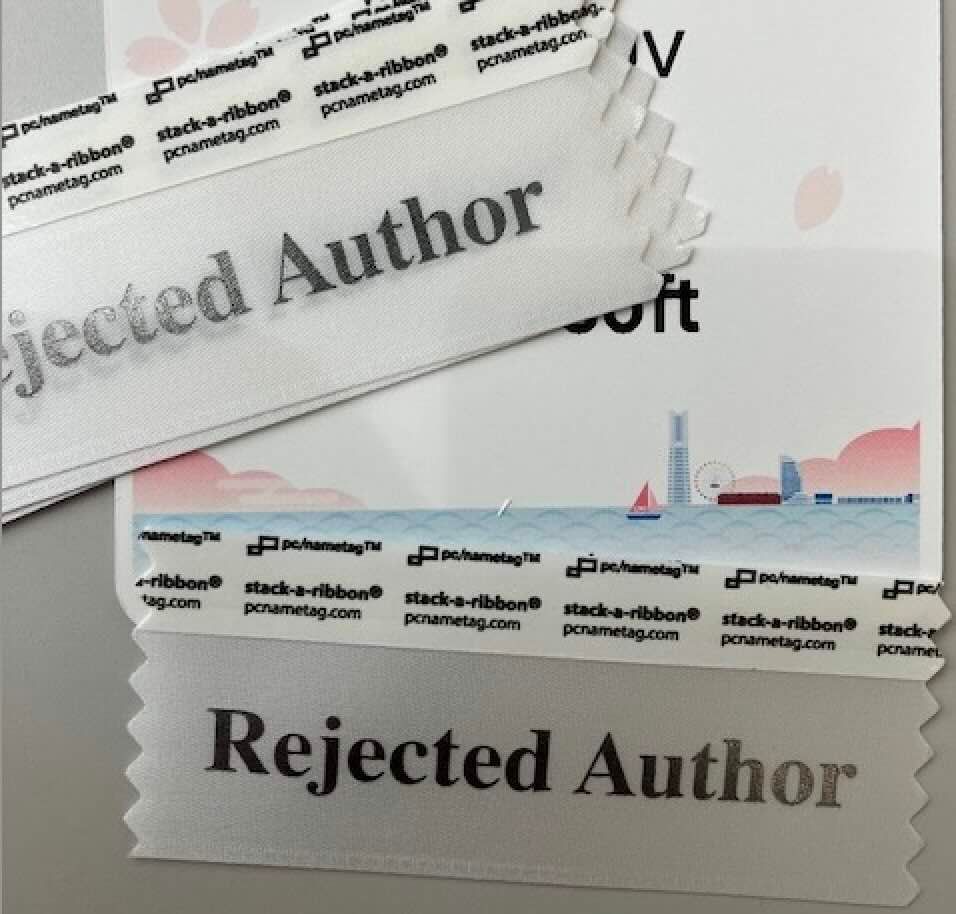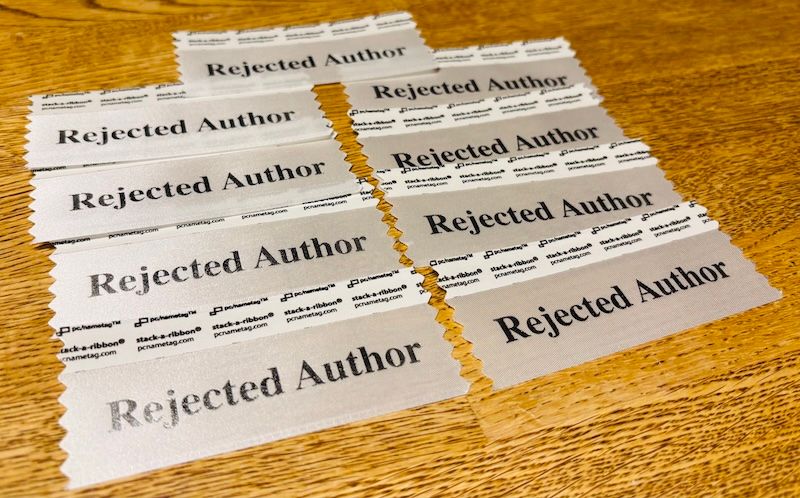🎟️ "Rejected Author" Stickers at CHI 2025: A Badge of Honor?
-
This year at CHI 2025, something subtle yet subversively brilliant happened. Nestled among the lanyards, badges, and workshop schedules were… “Rejected Author” ribbons. Yes, you read that right. Not just “Presenter” or “Reviewer” — but a proud white ribbon emblazoned with Rejected Author in bold.

Credits to my colleague in taking this photoAt first glance, this might seem like an inside joke or even a jab. But pause for a moment, and you’ll realize: this was a masterstroke of academic transparency and community-building.
 What’s the Idea Behind “Rejected Author”?
What’s the Idea Behind “Rejected Author”?The CHI community, like many in computer science, thrives on the peer review process — and suffers from it too. Paper rejections are more frequent than paper acceptances, especially at top-tier conferences. Yet, for all the talk about reviewing reform, rejection remains cloaked in shame.
This ribbon flips that script.
It makes rejection visible. It makes rejection normal. It makes rejection… a shared experience. Everyone wearing the ribbon has a story. A lesson. A new idea that didn’t quite land — this time.
 What If NeurIPS, ICML, ICLR Did the Same?
What If NeurIPS, ICML, ICLR Did the Same?Imagine stepping into NeurIPS 2025 and seeing a rainbow of ribbons:
- 🟡 Rejected Author
- 🟢 Resubmitted with Reviewer #2’s Headcanon in Mind
 Three Rounds of Rebuttals and Still Alive
Three Rounds of Rebuttals and Still Alive- 🟠 Paper in Progress Since NeurIPS 2022
 Workshop Savior
Workshop Savior
Beyond the laughs, these acknowledgments could:
- Destigmatize Rejection: Normalize the reality that even senior researchers get rejected (often).
- Celebrate Resilience: Encourage iteration, feedback, and perseverance — the true hallmarks of research.
- Foster Openness: Build trust in the community by lifting the veil off an opaque system.
- Create New Conversations: Spark hallway chats about what didn’t work — and why — instead of only what did.
 A Nudge Toward Reform?
A Nudge Toward Reform?While ribbons won’t fix peer review, they represent a small but meaningful culture shift. Humor and humility go a long way in a field that often takes itself too seriously.
Conferences like ICLR, ICML, and NeurIPS might consider adopting similar practices — not just as a joke, but as a form of collective catharsis and community healing.

Imagine a Poster Hall With...
- A “Wall of Rejected Abstracts” (optional, anonymous)
- Lightning talks for “Papers That Almost Were”
- Mentoring sessions titled “How I Handled My Worst Review Ever”
- Ribbons for “Never Give Up, Just Resubmit”
It’s not about celebrating failure. It’s about acknowledging the nonlinear, chaotic, human process of producing knowledge. And doing it with a bit of style.
 Final Thoughts
Final ThoughtsKudos to CHI 2025 for being bold, playful, and honest. In an ecosystem that often fetishizes acceptance rates and publication counts, this simple ribbon tells a better story — one of process, persistence, and people.
So next time your paper gets a “We regret to inform you,” wear it like a badge of honor.
You’re in good company.
P.S. If you're reading this while staring at your latest meta-review… just remember: one day, it could be a ribbon.
-
Lol! this is a great idea

